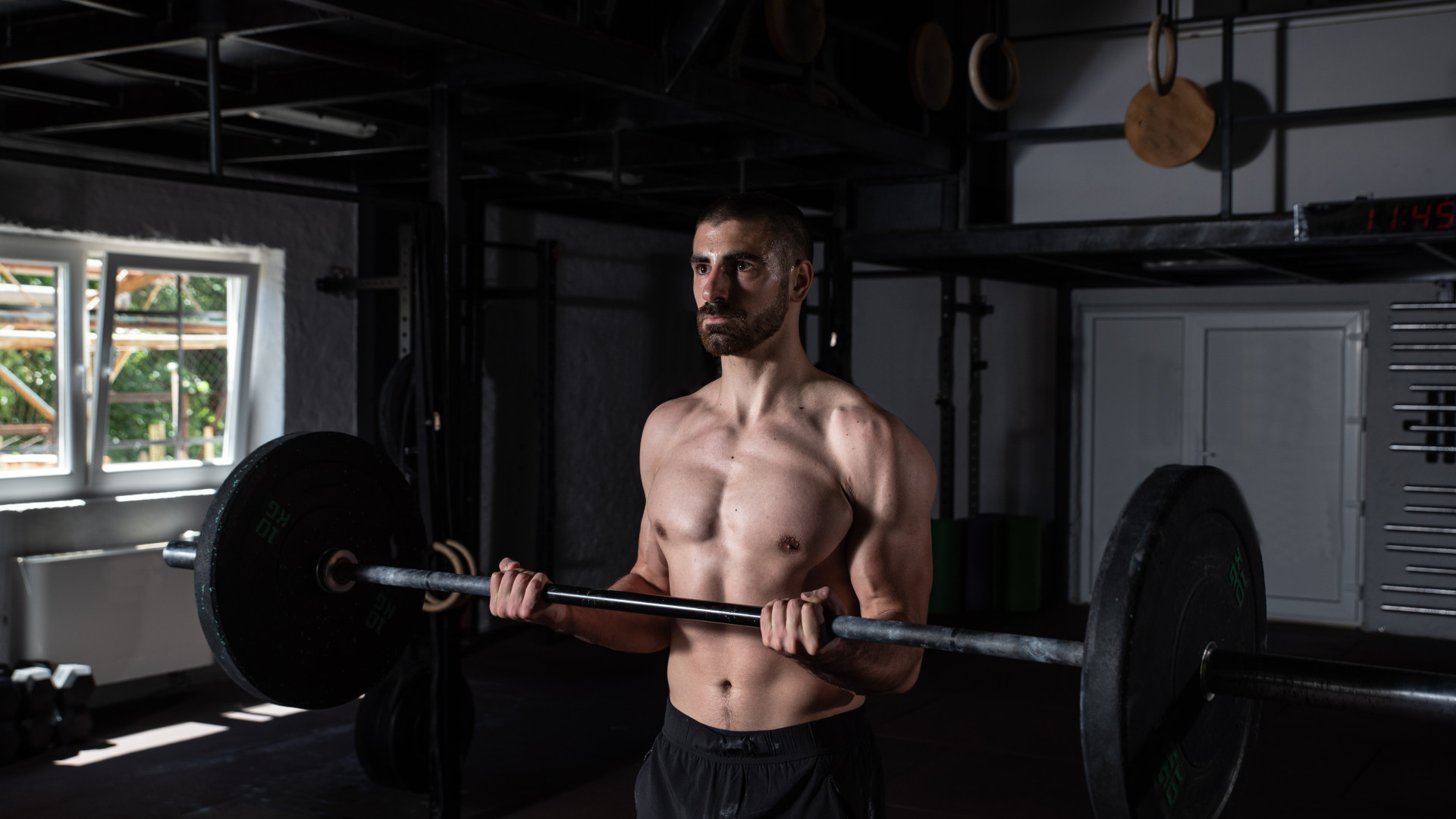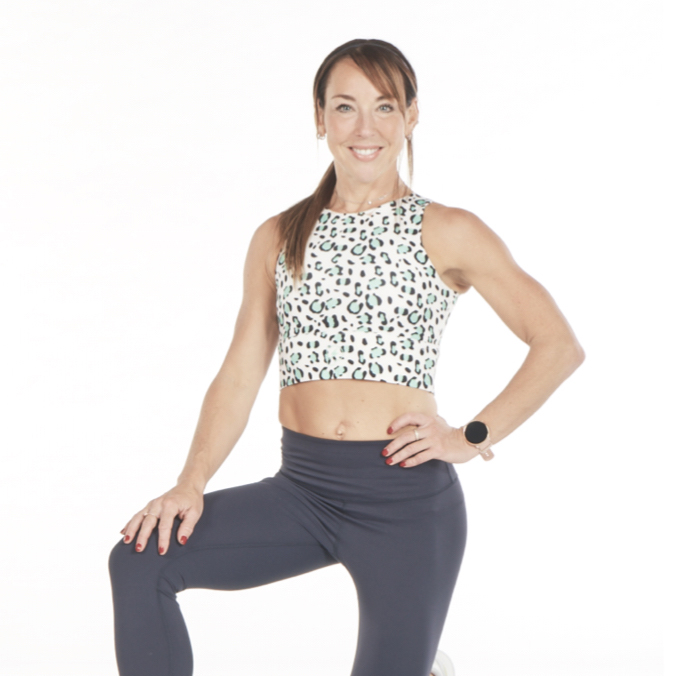Why high-rep training might be the fastest way to build muscle
Go for the burn and max out your sets


High-rep training typically refers to sets of 12 reps or more. For a long time, it’s been pigeonholed as the go-to method for boosting muscular endurance, but a growing number of fitness professionals and experienced lifters are rethinking that narrative.
Could pushing your rep range higher be the key to faster muscle growth? Some experts – and a few seriously shredded advocates of high-rep training – say yes.
One of them is Glenn Wilkinson, a 54-year-old coach from Scotland, also known online as Grindstone.foundation. Despite steering clear of heavy barbell work, Wilkinson has built a lean and impressively muscular physique using primarily high-rep sets – between 30-50 – think bicep curls, squats, and lateral raises. His results suggest that pushing volume, not just load, may be a powerful tool for hypertrophy.
What is high-rep training?

“Broadly speaking, high-rep training involves performing more than 12 reps per set, often in the 15-50 rep range, using lighter weights, typically around 50% of your one-rep max,” explains Fitness, Movement and Performance Coach, Dan Roberts. While it’s commonly included in endurance or hypertrophy training phases, its benefits go well beyond muscular stamina.
In fact, a 2021 review in Sports found that lighter-load, high-rep training can effectively increase muscular endurance and stimulate hypertrophy. Similarly, research from McMaster University concluded that lifting lighter weights for more reps can build just as much muscle as lifting heavier weights for fewer reps – provided the sets are taken close to failure.
“It’s not as big a deal as some make it,” says Roberts. “Building muscle takes intensity, and if you can generate that intensity with lighter dumbbells, you’ll see results. When people ask me what rep ranges are best for hypertrophy, my response is usually: all of them. It’s about how hard you push, not just how much you lift.” Here’s why.
The Science: muscle fibre types
Your muscles are made up of two main types of fibres: slow-twitch (Type I) and fast-twitch (Type II). They differ in size, function, and how they produce energy, which makes them respond differently to training.
Get all the latest news, reviews, deals and buying guides on gorgeous tech, home and active products from the T3 experts
“Type I fibres are built for endurance,” says Roberts. “They’re more resistant to fatigue and respond well to high-rep sets with lighter loads. This kind of training helps improve muscular stamina.”
“Type II fibres, or fast-twitch fibres, are designed for strength and explosiveness,” he adds. “They’re recruited more when you’re lifting heavy weights for low reps.”
Most muscles contain a mix of both fibre types, and everyone has both in their body. Genetics play a role, but how you train matters too.
So why does high-rep training work? It’s partly down to how different muscle fibres respond to stimuli. But don’t overthink it. High-rep training still recruits a mix of fibres, especially as you approach failure. Push hard enough, and you’ll tap into both types, making your workout more comprehensive than it might seem.
5 reasons why high-rep training counts
1. Muscle growth without the heavy load

Hypertrophy doesn’t require barbells stacked with plates. As long as your sets push close to failure, lighter weights can be just as effective for building muscle, especially for beginners or those returning from an injury or break. “Keep the intensity high - and remember that muscle is built when it’s put under tension,” says Roberts.
Legendary strength coach Charles Poliquin famously said that for maximum muscle growth, time under tension should fall between 20 and 70 seconds per set. That’s the sweet spot for most high-rep training. Because you're lifting lighter, you’re better able to control the speed of each rep, which means more time under tension and greater stimulus for growth.
And don’t be fooled into thinking high-rep sets are the ‘easy’ option. “If you think training at lower loads for higher reps is the easy way out, you have no idea,” says Roberts. “Try doing 25 deadlifts at 50% of your one-rep max. It’s not pretty.”
2. Greater muscle endurance
High-rep training improves your muscles’ ability to sustain effort over time. “It makes the muscles more practical and you’ll build stamina and resilience, which translates to better performance both in and out of the gym,” says Roberts.
That’s a major plus if you enjoy 5K runs, Hyrox competitions or any kind of endurance challenge. Your heart rate stays elevated, your lungs work harder, and your aerobic engine gets stronger.
“I believe volume sculpts a physique,” adds Wilkinson. And the added endurance? That’s just the icing on the cake.
3. Joint-friendly strength gains

High-rep training puts less stress on your joints while still encouraging strength and muscle development. “There’s just more room for error when you’re lifting lighter,” says Roberts. “If your form’s a bit off on one rep, you’ve got another 10-15 maybe more to adjust and get it right. But if you mess up on a heavy 3-reps, you’re much more likely to get injured.”
That makes high-rep work a smart option if you’re nursing a niggle, rehabbing an injury, or just getting started. “You’re still building functional strength without the strain and risk that often comes with heavy maximal lifts, and you’re building confidence too. You’ll learn how to feel into each movement,” adds Roberts.
4. Mental toughness tap
“High-rep sets test your mental grit,” says Wilkinson. “You’ll want to quit halfway through, but when you push through, you realise what your body and mind are truly capable of.” This style of training demands embracing discomfort, and cultivating a level of discipline that carries over into many areas of life.
High-rep training also sharpens your mind-muscle connection, allowing you to better engage and target muscles during all future workouts. “It’s not the weight you lift, it’s how you perform the reps,” Roberts explains. “I recently challenged my clients to perform three minutes of kettlebell swings. The mental toughness required is intense, but you quickly discover your body’s true potential. Embracing discomfort is key to adaptation and growth.”
5. Convineant and versatile

No gym? No problem! High-rep resistance training is ideal when you’re on the road or working out with minimal kit. I’ve trained in a mud hut in Kenya using just a resistance band – where there’s a will, there’s a way. With the right mindset and minimal equipment, you can still get a highly effective, muscle-building session.
Wilkinson is living proof that high-rep training works. “It’s all about getting stronger by keeping the muscle under tension and overloading through volume,” he says. Roberts agrees: “Try as many reps as possible in two minutes to keep the intensity high which, from the outset, is pretty tough.”
Can you still build muscle lifting light?
Absolutely. Both scientific research and real-world results show that lifting lighter weights for higher reps (so long as you train close to failure), can produce hypertrophy on par with traditional low-rep, heavy-load programs.
The key? Intensity. If those final reps are challenging and your muscles are burning, you’re sending a powerful growth signal. The bonus? Improved muscular endurance, joint-friendliness, and even cardiovascular benefits.
And if you’re stuck in a plateau or just bored with your current routine? “High-rep training can help change the variables and get you out of a rut,” says Roberts. “Mixing up your rep ranges every 2-3 months is one of the simplest ways to keep progressing.” Slower tempos and high-volume sets can spark new gains – and make your workouts feel more intentional.
From personal experience, high-rep training is anything but easy. The burn is real. But the more I lean into it, the more I believe doing the hard stuff delivers.

Lucy Miller is a journalist, Level 3 Personal Trainer, Nutritional Advisor and Children’s Fitness Specialist. She holds fitness qualifications from NASM Training and Premier Training International and has been a fitness journalist and fitness (and cover) model for over 20 years. Since going freelance in 2014, Lucy left Men’s Fitness Magazine to write for an abundance of top consumer titles such as Women’s Health, Women’s Fitness, Waitrose, The Times, The Guardian and Runners World.
She’s also extremely passionate when it comes to educating others about health and physical activity and loves inspiring and working with children and adults to help make fitness fun, sustainable and accessible. In her spare time, Lucy is ever the sportswoman. Once a national gymnast, having won three national titles, she has also run a handful of marathons around the world and loves to test her physical and mental side with daily running and gym sessions, not to mention ballet, bootcamp, boxing and TRX.
You must confirm your public display name before commenting
Please logout and then login again, you will then be prompted to enter your display name.